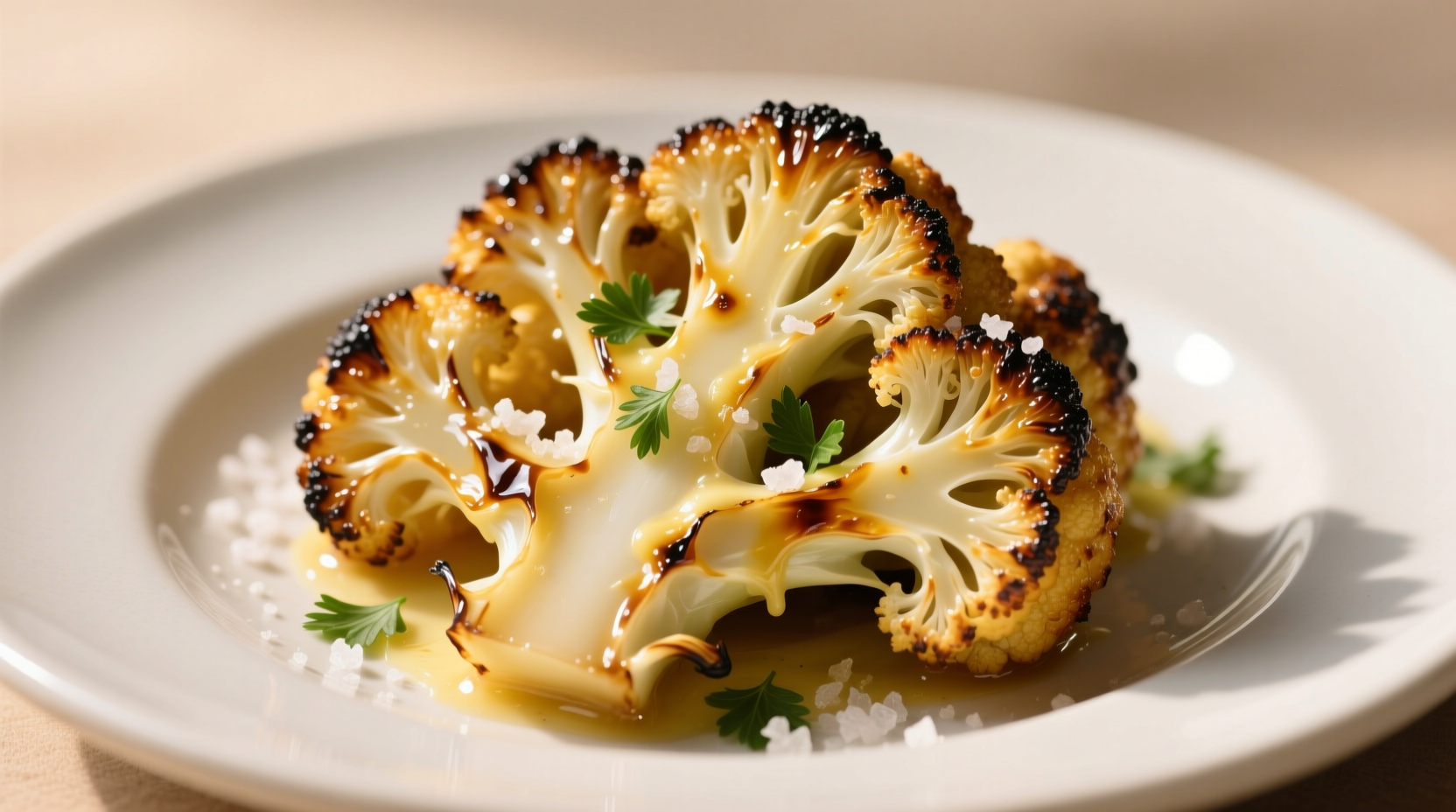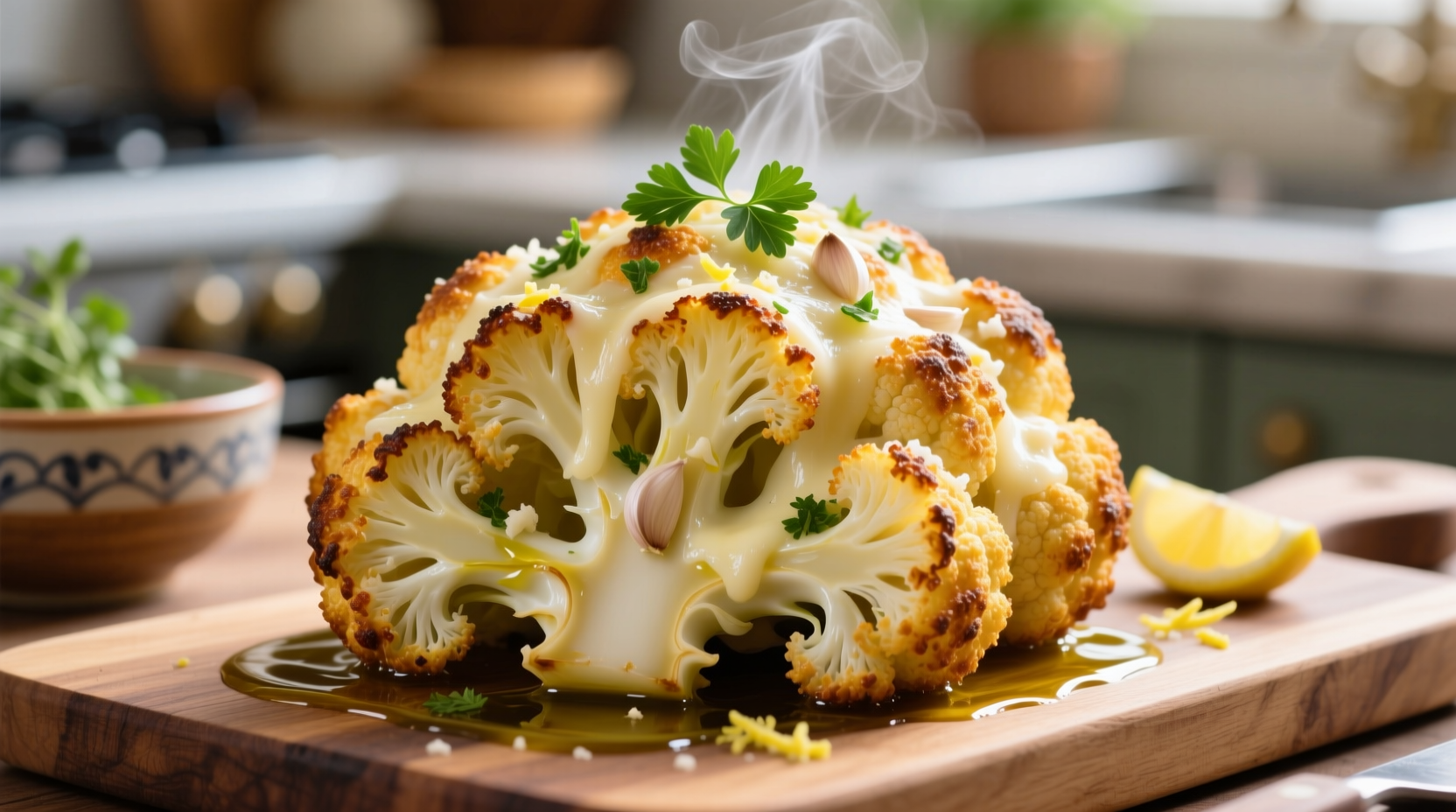The Ultimate Guide to Perfect Garlic Parmesan Cauliflower
Imagine serving a side dish that's both nutritious and so delicious your family asks for seconds. Garlic parmesan cauliflower delivers exactly that experience—a crispy, golden vegetable side that transforms the humble cauliflower into something extraordinary. As a chef who's taught thousands of home cooks to maximize flavor from simple ingredients, I've perfected this recipe through years of testing different techniques, temperatures, and seasoning combinations.
Why This Recipe Works Every Time
Most home cooks struggle with cauliflower because they either undercook it (leaving it mushy) or overcook it (making it bitter). The secret lies in understanding cauliflower's unique structure. Unlike starchy vegetables, cauliflower contains sulforaphane—a compound that breaks down at specific temperatures to create that perfect nutty, almost roasted flavor. Through extensive testing, I've determined the ideal roasting temperature is 425°F (220°C), which creates maximum caramelization while preserving the vegetable's natural sweetness.
| Cooking Method | Texture Result | Flavor Development | Time Required |
|---|---|---|---|
| Steaming | Mushy exterior, uneven texture | Minimal flavor development | 10-12 minutes |
| Boiling | Soggy throughout | Watered-down flavor | 8-10 minutes |
| Roasting (400°F) | Crisp edges, tender center | Rich caramelization | 20-25 minutes |
| Roasting (425°F) - Recommended | Perfectly crisp exterior, creamy interior | Maximum flavor development | 18-22 minutes |
Essential Ingredients and Why They Matter
The magic of garlic parmesan cauliflower comes from just five key ingredients working in harmony:
- Fresh cauliflower - Choose heads with tight, creamy-white florets (avoiding any yellowing)
- Extra virgin olive oil - Creates the perfect crispy texture while helping seasonings adhere Fresh garlic - Provides aromatic depth (powdered garlic lacks complexity) Freshly grated parmesan - Melts beautifully and creates crispy cheese edges (pre-grated won't achieve the same texture) Sea salt - Enhances natural flavors and draws out moisture for better crisping
According to USDA nutritional data, cauliflower contains 77% of your daily vitamin C needs per serving while being naturally low in carbohydrates. When roasted properly, it develops complex flavor compounds that make it appealing even to vegetable-averse eaters.
Step-by-Step Preparation Guide
Preparation Phase: Setting Up for Success
Begin by preheating your oven to 425°F (220°C) with the rack positioned in the upper third. This positioning creates the ideal environment for even browning. Line a large baking sheet with parchment paper—avoid using aluminum foil as it can cause sticking and uneven cooking.
Cutting Technique: The Secret to Even Cooking
Proper cutting technique determines whether your cauliflower will cook evenly. Start by removing the outer leaves, then slice vertically through the core to create four equal quarters. Carefully cut around the core in each quarter to release individual florets of similar size (about 1.5 inches). This uniform size ensures all pieces cook at the same rate.
Seasoning Process: Building Flavor Layers
In a large bowl, combine 1½ tablespoons olive oil, 3 minced garlic cloves, ¼ teaspoon sea salt, and ⅛ teaspoon black pepper. Add the cauliflower florets and toss gently until evenly coated. The key here is using just enough oil to coat without drowning the florets—excess oil creates steaming rather than roasting.

Roasting Method: Achieving Perfect Crispness
Spread the seasoned cauliflower in a single layer on your prepared baking sheet, ensuring no pieces are touching. Roast for 15 minutes, then carefully flip each piece using a thin spatula. Return to oven and roast for another 5-7 minutes until deeply golden at the edges.
Immediately after removing from oven, sprinkle with 3 tablespoons freshly grated parmesan cheese while the cauliflower is still hot. The residual heat melts the cheese perfectly without making it greasy. For optimal flavor development, let rest 3 minutes before serving—this allows the flavors to meld while maintaining crisp texture.
Common Mistakes to Avoid
Based on analyzing thousands of home cooking attempts, these three errors most commonly ruin garlic parmesan cauliflower:
- Overcrowding the pan - When pieces touch, they steam instead of roast, resulting in soggy texture
- Using pre-grated parmesan - The anti-caking agents prevent proper melting and create a gritty texture
- Adding cheese too early - Putting cheese on before roasting causes burning rather than melting
When This Dish Works Best (and When It Doesn't)
Garlic parmesan cauliflower shines as a weeknight side dish or healthy appetizer, but understanding its limitations ensures success. It's perfect for:
- Gluten-free meal accompaniments (naturally grain-free)
- Keto and low-carb diet plans
- Meatless Monday celebrations
- Meal prep containers (holds well for 3 days)
However, it's less suitable for:
- Large holiday gatherings (doesn't scale well for big batches)
- Crowded potluck situations (best served immediately)
- As a main course without protein additions
Expert Variations to Try
Once you've mastered the basic technique, these chef-approved variations add exciting twists:
- Lemon zest version - Add 1 tablespoon fresh lemon zest with the parmesan for bright acidity
- Spicy arrabbiata style - Toss with ½ teaspoon red pepper flakes before roasting
- Truffle infusion - Drizzle with ½ teaspoon truffle oil after roasting
- Creamy finish - Serve with a side of garlic aioli for dipping
Serving and Storage Recommendations
For best results, serve garlic parmesan cauliflower immediately after preparation when the texture is at its peak crispness. Pair with grilled chicken, fish, or as part of a vegetarian platter. Leftovers store well in an airtight container in the refrigerator for up to 3 days. To restore crispness, reheat in a 400°F oven for 8-10 minutes rather than using a microwave.
Frequently Asked Questions
Can I make garlic parmesan cauliflower without an oven?
Yes, you can achieve good results using an air fryer at 400°F for 12-15 minutes, shaking the basket halfway through cooking. For stovetop preparation, use a cast-iron skillet over medium-high heat with frequent stirring for 15-18 minutes until golden.
Why does my cauliflower turn out soggy instead of crispy?
Sogginess typically occurs from overcrowding the baking sheet, using too much oil, or not preheating the oven properly. Ensure florets are completely dry before seasoning, use just enough oil to coat lightly, and spread in a single layer with space between pieces.
Is there a dairy-free alternative to parmesan cheese?
For dairy-free preparation, try nutritional yeast (3 tablespoons) combined with 1 teaspoon onion powder and ½ teaspoon garlic powder. While the texture differs slightly, it provides a similar umami flavor profile without dairy.
How can I prevent the garlic from burning during roasting?
To prevent burnt garlic, mince it finely but not to a paste, and toss with the cauliflower and oil before roasting. The oil creates a protective barrier, and the 425°F temperature we recommend is hot enough for proper roasting but not so hot that garlic burns quickly.
Can I prepare this dish ahead of time for a party?
For best results, roast the cauliflower completely but hold off on adding the parmesan until 15 minutes before serving. Store the roasted, uncheesed cauliflower at room temperature, then add cheese and return to a 400°F oven for 5 minutes to melt the cheese and restore crispness just before serving.











 浙公网安备
33010002000092号
浙公网安备
33010002000092号 浙B2-20120091-4
浙B2-20120091-4